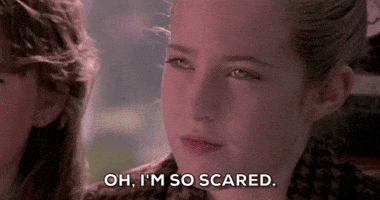Let's address a cople of points, because there is some misreading and/or projection with back-channeling.
First, it is talking about schools not being allowed to contact certain individuals who are currently associated with a student-athlete, such as family members, scholastic/nonscholarstic coach, advisor. Those terms do not specify past associations, such as FORMER coaches or FORMER teammates. Now, you can argue that an "e.g." list is not an exclusive exhaustive listing, and that might be true. But it becomes impossible to legislate and include any and all past associations (i.e., would it be tampering if a school talked to an old Pop Warner coach from middle school).
The NCAA rules can SAY whatever they want, but the reason it is drafted to say "associated with" in the CURRENT TENSE (and not the past tense) is because there is no way to enforce it otherwise.
Second, there is a bit of an issue with DIRECTION. Short of the use of the word "communicate", the direction of the prohibition is against UNIVERSITY EMPLOYEES from "making contact" with the student-athlete or anyone currently associated with the student-athlete. But what if the student-athlete back-channels to a university? The way I read the rule, it is not clear that this would be tampering either.
Finally, let's not forget that if things are done PROPERLY, and the back-channeling happens with the COLLECTIVE, this also may fall outside of the statutory construction. I can see an argument to be made on both sides, but the issue is also one of first impression.
Interesting times.
There is certainly room for interpretation within the rules. And a clear definition of "tampering" beyond just the contact rules would probably be helpful. Cynically, I don't believe the NCAA wants to go that route because I don't believe they actually want to police things like "tampering" because of how difficult it is to prove when you don't have direct contact between the staff and the student athlete and how expensive it would be to effectively (and fairly) police. But, just because it's difficult to prove doesn't mean it isn't impermissible contact.
Starting with your second point, the word communicate can't be ignored. The language used is "communicate or make contact...." Beginning your contention with "short of the use of the word 'communicate'" ignores the plain language of the rule. But, it exists, so we must assume it is there for a reason. If the NCAA wanted to prohibit any "athletics staff member or other representative" from initiating contact, they could have written it that way by cutting "communicate or" and leaving "make contact." Or they could have written "communicate AND make contact". The use of "or" as opposed to "and" further suggests the drafters wanted a broader prohibition against communication in either direction.
To your first point, absolutely it prevents discussion where there is a current association (and not a past association). No argument there. The rule would be unworkable (and likely unenforceable) otherwise But, notwithstanding your qualified acknowledgment that a list of examples
might not be considered an exhaustive list, where a non-exhaustive list of examples follows a broader classification it is the broader classification that generally controls. The operative restriction is against "an individual associated with a student athlete". Moreover, you seem to be ignoring the phrase "direct or indirectly", which further emphasizes that the contact need not be "directly" between any of these individuals.
To your example, a staff member communicating with a student athlete's old Pop Warner coach, whom the student athlete is not currently associated with, appears outside the restriction. But, if the student athlete's old Pop Warner coach is actively working as a go-between for a staffer and the student athlete regarding a future transfer, it boggles the mind how that "individual" would be regarded as anything but "associated" with the student athlete. The substance of the conversation itself is evidence of the association between the parties. But good luck coming up with evidence of the substantive of the conversation; hence the difficulty in proving tampering outside of direct contact between the staff and student athlete.
As to your last point, I would caution that not all collectives are the same, and some of them are apparently run by ******* morons. And the phrase, "other representative of the institution's athletics interest" is frighteningly broad. Case in point: the morons at The Varsity Collective's website: (1) uses the University of Wisconsin trademark; (2) states it is "a proud partner of Wisconsin athletics;" (3) states "We have aligned our efforts with UW Athletics’ holistic mission and have built partnerships with influential alumni and some of the biggest names in the Badgers’ record books;" and (4) notes that "tax-deductible contribution to The Varsity Collective is recognized as an informational gift by the University of Wisconsin Foundation" (NOTE: I'm not sure how it's tax deductible considering current IRS guidance, but that's a question for their attorneys). In the case of Wisconsin, their collective has created room for the argument that "The Varsity Collective" qualifies as a "representative of the institution's athletics interests."
Interesting times, indeed...



